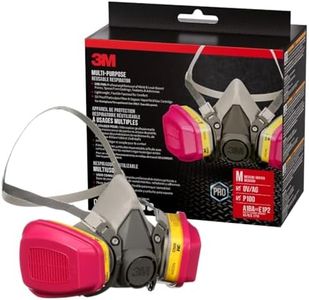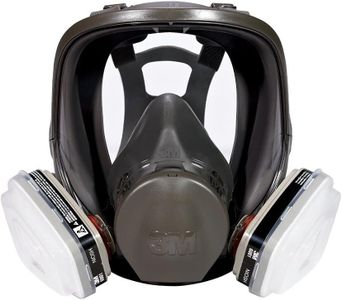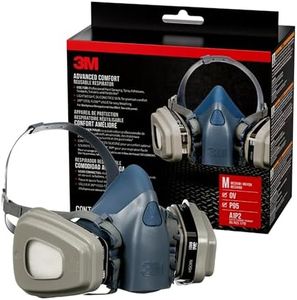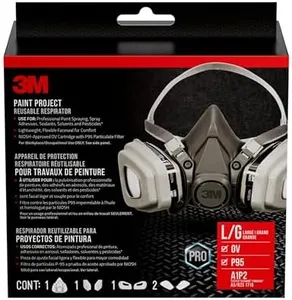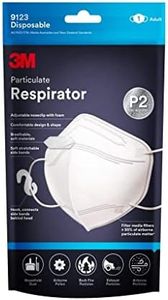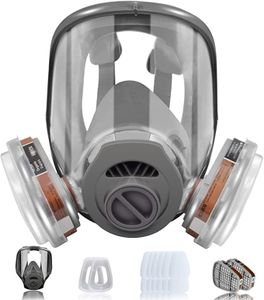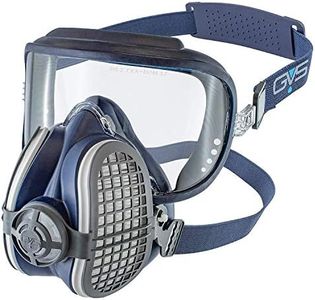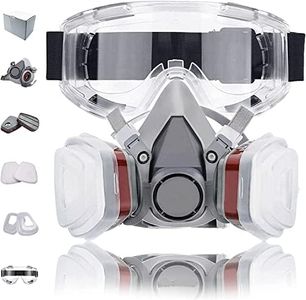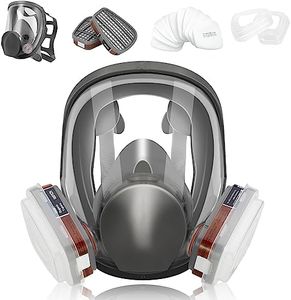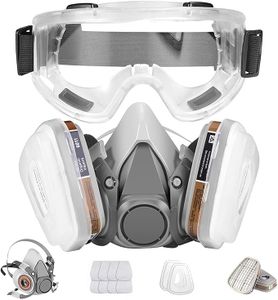We Use CookiesWe use cookies to enhance the security, performance,
functionality and for analytical and promotional activities. By continuing to browse this site you
are agreeing to our privacy policy
10 Best Respirator Mask For Epoxy Resin
From leading brands and best sellers available on the web.By clicking on a link to a third party's website, log data is shared with that third party.
Buying Guide for the Best Respirator Mask For Epoxy Resin
When working with epoxy resin, protecting your lungs from harmful fumes and particles is essential. Choosing the right respirator mask ensures you stay safe and comfortable during your projects. Since people have different needs and preferences, understanding the important features of respirator masks helps you find the best fit for your personal use, whether you're working for short sessions or long periods, in a small craft studio or a larger workshop.Filter Type (Cartridge/Filter Rating)The filter type refers to the kind of protection the mask offers. For epoxy resin, organic vapor cartridges and particulate filters (for fumes and dust) are most relevant. This is important because using the wrong filter may not protect you from all the chemicals present in resin fumes. Filter types come in different classes: particulate (protects from dust), gas/vapor (protects from fumes), or combination filters. If your main concern is resin fumes, look for organic vapor (often marked with 'OV') cartridges. If you also work in a space with a lot of dust, a combination filter is better. The right choice depends on your craft—if you only use resins, go for organic vapor, but if you sand or grind parts, a combo filter offers wider protection.
Mask Fit (Half-Face vs Full-Face)The fit of the mask affects both comfort and protection. Half-face respirators cover just your nose and mouth, while full-face masks also shield your eyes and face. This matters because fumes can irritate eyes and skin, not just lungs. Half-face masks are lighter and may be more comfortable for long use, especially if you already use protective eyewear. Full-face masks provide extra protection for your eyes against chemical splashes and fumes but are bulkier. Choose a half-face model if you mostly need to protect your lungs and already wear goggles, or a full-face one if you want all-in-one coverage—especially valuable if working for long hours with strong fumes.
Seal and AdjustabilityA good seal and adjustability mean the mask fits snugly to your face and doesn't let in unfiltered air. This is important, as gaps can reduce the mask's effectiveness. Masks come with different adjustment systems, like single or multiple straps and adjustable nose pieces. Well-designed masks offer a secure fit for different face shapes and sizes. To pick the right one, consider how well the mask seals around your nose, cheeks, and chin—if you have facial hair or unusual face shape, try different styles to see what seals best. A mask that's comfortable and stays in place allows you to focus on your project, not your gear.
BreathabilityBreathability is about how easy it is to inhale and exhale while wearing the mask. If a mask is hard to breathe through, you'll quickly feel tired or uncomfortable, especially during long projects. Masks with high-efficiency filters can sometimes feel harder to breathe through, but more modern designs balance good protection with airflow. Think about how long you'll wear the mask at one time—if you work for hours, look for one with good breathability to prevent fatigue.
Replaceable vs Disposable FiltersSome respirator masks use replaceable filters, while others are all-in-one and disposable after several uses. Replaceable filter masks let you swap out cartridges when needed, giving versatility and long-term use. Disposable masks are simple to use and often lighter, but you have to buy a whole new mask after the filter is used up. Pick replaceable if you’ll use the mask often or over a long period, while disposables are good for occasional or one-off use.
Comfort and WeightComfort and weight influence how long you can wear the mask without discomfort or strain. Lighter, cushioned masks are better for longer sessions. Some models have extra padding or cooling features. If you have to wear the mask for extended periods during your epoxy projects, prioritize these features. Try wearing the mask for several minutes before deciding to ensure there are no pressure points or discomfort.

